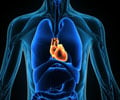The research team has identifies a rouge bacteria, Chlamydia, that wrecks the immune system causing coronary artery disease and miscarriages.
Anthony Azenabor of University of Wisconsin, Milwaukee has identified a link in two seemingly unrelated health issues. The research team has identifies a rouge bacteria, Chlamydia, that wrecks the immune system causing coronary artery disease and miscarriages. By focusing on the immune system mechanisms in Chlamydia infections, Azenabor has identified an important link in seemingly unrelated health problems.
Chlamydia pneumoniae is a microbe that normally causes pneumonia and bronchitis, but it has long been associated with atherosclerosis, a cardiovascular disease also called “hardening of the arteries.” “Chlamydiae are unusual, because, unlike most other bacteria, they use the same form of cholesterol for metabolism that human cells use,” said Aznebor.When a pathogen invades human tissue immune system unleashes “killer cells” called macrophages at destroys it. The macrophages cell membrane store cholesterol and control it. But when it’s infected with C. pneumoniae, the infection becomes chronic as the microbe traffics cholesterol from the macrophage cell membrane to its own, causing a change in the macrophage that makes it rigid and unable to move.
As the macrophages become immobile, they accumulate in the blood vessel walls, setting the stage for atherosclerosis. Researchers also found that Chlamydia is also involved in the occurrence of spontaneous abortions or miscarriages.
Trophoblasts are the protective cells in the placenta during early pregnancy. They act like macrophages in many ways, and their functions are mediated by the hormones estrogen and progesterone and cholesterol is the molecule used to produce those hormones.
“It’s the same old story,” said Azenabor. “Only this time the attacked cell is a trophoblast instead of a macrophage, and the depleted cholesterol hinders production of estrogen and progesterone instead of altering toxin production,” he added.
Source-ANI
LIN/M











